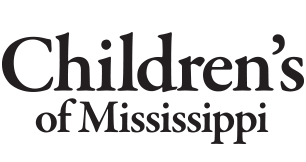More Information
- Children’s Plastic and Reconstructive Surgery Home
- Children's Craniofacial Services
-
Conditions and Treatments
- Conditions We Treat
-
More Information
- Ear deformities: microtia, anotia and constricted ear
- Cleft Lip and Palate
- Congenital nevus
- Craniosynostosis
- Dermoid cyst
- Nose deformities, nasal breathing problems
- Orbital hypertelorism
- Pierre Robin Sequence/Syndrome
- Positional Plagiocephaly: Flat Head Syndrome
- Prominent ears
- Velopharyngeal dysfunction
- Frequently Asked Questions
- Meet Our Team
- Patient/Family Resources
- Visit Preparation
Pierre Robin Sequence/Syndrome
What is Pierre Robin Sequence?
Pierre Robin sequence (PRS) is a condition diagnosed in newborns when a baby has three specific abnormalities:
- Micrognathia: (my-crow-NAY-the-uh) an unusually small jaw
- Glossoptosis: (gloss-op-TOE-sis) a tongue that is farther back in the mouth than normal
- Airway obstruction: a blocked passageway to the lungs
Although it is sometimes called Pierre Robin Syndrome, it is not a true syndrome. In a syndrome, a baby will have several abnormalities in different parts of the body, and all of them develop at the same time. In a sequence, one abnormality begins on its own and then leads to another one.
In PRS, the small jaw develops first. It then means there isn’t enough space in the mouth for the tongue. That causes the tongue to be pushed to the back of the mouth. Then, the tongue blocks part of the opening of the windpipe in the back of the throat. In many cases, the tongue also keeps the roof of the mouth from closing as it should, causing a cleft palate.
While PRS is not a syndrome, it can occur as part of a syndrome that includes other problems as well. This is called syndromic Pierre Robin sequence. The most common syndrome that includes PRS is Stickler syndrome. Some other syndromes that include PRS are:
- CHARGE syndrome
- 22q11.2 microdeletion syndrome/DiGeorge syndrome/ Velocardiofacial syndrome
- Fetal alcohol syndrome
- Treacher Collins syndrome
PRS can also occur on its own, called isolated, or non-syndromic, Pierre Robin sequence.
Most babies who have PRS also have a cleft palate that is usually U-shaped. They may also have conditions such as cleft lip and sleep apnea.
Causes of Pierre Robin sequence
Right now, scientists don’t fully understand what causes PRS. Most experts believe that several different factors affect how the baby’s jaw develops, and that sets off other problems with the placement of the tongue, and blockage of the windpipe and cleft palate.
There isn’t much information about how many babies have PRS. The best estimate is that it affects about 1 in 8,500 to 1 in 14,000 babies per year.
About half of babies with PRS have syndromic PRS, meaning it occurs as part of a syndrome that includes other problems. In these cases, the genetic cause of the syndrome allows genetic experts to determine the chances of it recurring in the family and guide treatment decisions.
In isolated PRS, the abnormality is usually not inherited. It can occur without any family history of the condition.
How Pierre Robin sequence is diagnosed
One of the characteristics of PRS, the unusually small jaw (micrognathia), may be detected during pregnancy on ultrasound. When that happens, doctors may recommend genetic testing for the baby and an appointment with genetic providers (genetic counselor or geneticist) for the parents.
Doctors may also work with other specialists to prepare for delivery in case there are complications with the baby’s breathing at birth. Maternal-fetal medicine specialists, neonatologists, pediatric anesthesiologists, and pediatric otolaryngologists may all be part of the team. Children’s of Mississippi has all these pediatric experts on staff to help with these babies.
Some symptoms of PRS include:
- Breathing and feeding problems, ranging from mild to severe
- Sleep apnea – breathing that completely stops during sleep, before restarting
- Choking during feeding
- Trouble gaining weight
- Acid reflux
- Repeated ear infections
- Teeth present at birth
Treatment for Pierre Robin sequence
The main issues to deal with in PRS are problems breathing and eating. Problems can range from mild to severe. Difficulty breathing may mean the baby doesn't get enough oxygen. Difficulty eating may mean the baby has a hard time gaining weight, a condition called failure to thrive.
Right after the baby is born, a neonatologist can determine how much help the baby will need breathing and eating, and help parents understand how to take care of their baby. A pediatric dietitian may also offer special dietary help.
More long-term treatment will depend on the type of PRS, isolated or syndromic, and the severity of the condition.
Mild cases of PRS are usually isolated, meaning they aren't part of a larger syndrome. Most of the time, mild PRS can be treated without surgery. It includes positioning the baby so gravity pulls the tongue forward and improves breathing. This technique is effective for about 70% of babies with mild symptoms.
There are other techniques that may also help, including nasopharyngeal stenting and CPAP machines. The care team may also use a device placed into the baby’s mouth that helps position the tongue, called a pre-epiglottic baton plate. Additionally, these babies also sometimes have "catch up" growth in their jaws over about five years, and this allows the tongue to have a normal position inside the mouth.
More severe cases of PRS are usually syndromic, meaning they are part of a syndrome that also includes problems in other parts of the body. Babies with severe PRS most likely will require surgery. The decision to perform surgery is often based on problems with breathing or feeding. Often, these babies will have a sleep study to determine how often and how long they stop breathing while asleep.
At Children's of Mississippi, craniofacial surgeons often treat severe cases of PRS with mandibular distraction osteogenesis, a type of jaw surgery.
Mandibular distraction osteogenesis (MDO)
The goal of this surgery is to lengthen the jaw and bring the tongue forward in the mouth, so it no longer blocks the windpipe. This is done to help the baby eat and breathe normally without any kind of medical support.
In this procedure, a surgeon makes cuts into the jaw and then places metal devices called distractors into the bone across both sides of the cut to push the two sides apart. Over time, the distractors are gradually widened, triggering the bones to grow to fill in the gap. This slow process for lengthening the jaw uses the body’s ability to form bone, called osteogenesis, as part of the treatment.
After surgery, the jaw lengthens over time, with three distinct phases in the process.
- Latency: This is the period of time after surgery but before the distractors are used to widen the gap in the jaw where the cuts were made during surgery.
- Activation: In this phase, the distractors are used little by little to widen the gap in the area where the jawbone was cut during surgery. New bone grows to fill the gap.
- Consolidation: This is the final phase of the treatment. New bone growth is allowed to completely set. Once this is finished, the distractors are removed.
There are risks for the surgery, and risks for deciding not to do it. Every child is different and it’s important to ask your doctor what risks your child faces. Craniofacial surgeons at Children’s of Mississippi will take time to talk with you and make sure you understand all your options.
Other surgical interventions
Sometimes, doctors will perform a procedure called tongue-lip adhesion. This attaches the tongue to the lower lip to keep it forward in the mouth. This is a temporary measure to help the baby breathe better while the jaw grows.
In the most severe cases of PRS, a tracheostomy may be performed to bypass the obstruction. In this procedure, a surgeon will cut an opening through the throat directly into the windpipe and insert a tube into the opening.
What is the outlook for babies with PRS?
Because PRS affects breathing and eating, short-term and long-term complications relate to those problems if they are not treated.
Babies who get the right treatment and begin breathing well are usually able to go home without needing a tracheostomy or feeding tube.
Babies with isolated (non-syndromic) PRS are at a lower risk for complications, both short-term and long-term, than babies who have PRS as part of a larger syndrome.
Get help at Children’s of Mississippi
If your child has Pierre Robin sequence, the pediatric craniofacial surgeons at Children’s of Mississippi can provide expert care. Request an appointment online.
Last reviewed: August 29, 2025



 UMMC
UMMC